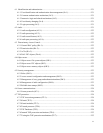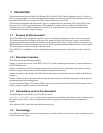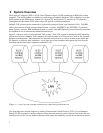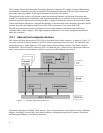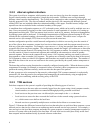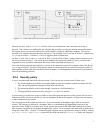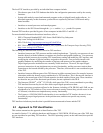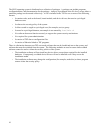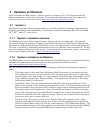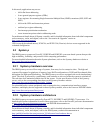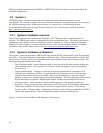
Network services, such as ssh or ftp, involve client-server architecture and a network service-layer
protocol. The client-server model splits the software that provides a service into a client portion that makes
the request, and a server portion that carries out the request, usually on a different computer. The service
protocol is the interface between the client and server. For example, User A can log in at Host 1, and then use
ssh to log in to Host 2. On Host 2, User A is logged in from a remote host.
On Host 1, when User A uses ssh to log in to Host 2, the ssh client on Host 1 makes protocol requests to an
ssh server process on Host 2. The server process mediates the request on behalf of User A, carries out the
requested service, if possible, and returns the results to the requesting client process.
Also, note that the network client and server can be on the same host system. For example, when User B uses
ssh to log in to Host 2, the user's client process opens an ssh connection to the ssh server process on Host 2.
Although this process takes place on the local host computer, it is distinguished from local services because it
involves networking protocols.
2.2.4 Security policy
A user is an authorized individual with an account. Users can use the system in one of three ways:
1. By interacting directly with the system thorough a session at a computer console (in which case the
user can use the graphical display provided as the console), or
2. By interacting directly with system through a session at a serial terminal, or
3. Through deferred execution of jobs using the cron and atd utilities.
A user must log in at the local system in order to access the protected resources of the system. Once a user is
authenticated, the user can access files or execute programs on the local computer, or make network requests
to other computers in the system.
The only subjects in the system are processes. A process consists of an address space with an execution
context. The process is confined to a computer; there is no mechanism for dispatching a process to run
remotely (across TCP/IP) on another host. Every process has a process ID (PID) that is unique on its local
host computer, but PIDs are not unique throughout the system. As an example, each host in the system has an
init process with PID 1. Section 5.2 of this document explains how a parent process creates a child by making
a clone(), fork() or a vfork() system call; the child can then call execve() to load a new program.
7
Figure 2-3: Local and network services provided by SLES



